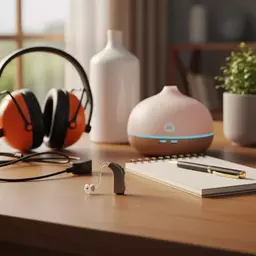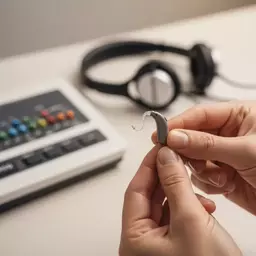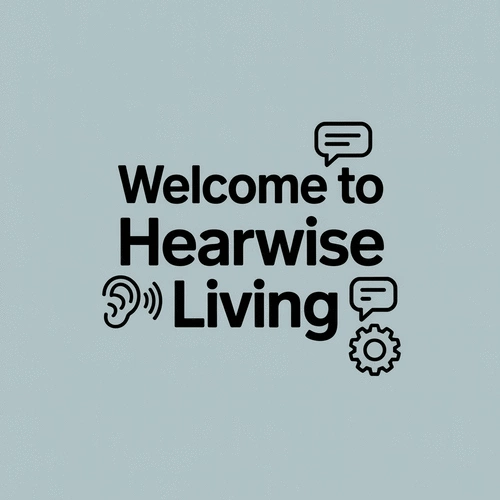As we approach 2025, hearing aids are set to redefine how we experience sound. With cutting-edge advancements in technology, the future looks promising for those navigating hearing loss. Here’s what you can expect in the evolving landscape of auditory assistance.
What You Will Learn
- The integration of Artificial Intelligence in hearing aids allows for real-time adaptation to various sound environments.
- Advancements in Bluetooth LE enhance connectivity with smartphones and other devices, improving user experience.
- Auracast™ technology offers a novel way to stream audio directly to hearing aids for clearer communication in social situations.
- Personalized hearing solutions enable users to customize their devices to fit individual hearing profiles and preferences.
- The rise of telehealth provides convenient and accessible audiology consultations, especially beneficial for those with mobility issues.
- Understanding the cost spectrum of hearing aids helps consumers make informed choices, with prices ranging from $1,500 to $4,000.
- Insurance coverage can offset some costs, and many audiologists offer trial periods to ensure the right fit and functionality.
- Considering accessory costs, like custom ear molds and rechargeable batteries, is essential for budgeting your overall investment in hearing health.
Hearing Aid Technology: Costs & Features (2025)
This visual summarizes the expected price ranges and key features of advanced hearing aids in 2025, along with essential accessory costs.
Hearing Aid Price Ranges (Per Device)
Basic Models
$1,500 - $2,500
Mid-Range Models
$2,500 - $3,500
Premium Models
$3,500 - $4,000+
Key Emerging Technologies
- ✓ AI Integration (Real-time adaptation)
- ✓ Bluetooth LE (Enhanced connectivity)
- ✓ Auracast™ (Direct audio streaming)
Essential Accessory Costs
- Ear Canal Molds: $100 - $300
- Rechargeable Batteries: Upfront cost, long-term savings
- Cleaning Tools: $20 - $50
The Evolution of Hearing Aids: What to Expect in 2025
As we look ahead to 2025, the world of hearing aids is undergoing remarkable changes that promise to enhance our listening experiences. With the advent of advanced technologies, we can expect hearing aids to become even more effective and user-friendly. Innovations like AI integration, Bluetooth LE, and the groundbreaking Auracast™ technology are setting the stage for a new era in auditory assistance. Let's dive into the exciting trends shaping this evolution!
Emerging Trends in Hearing Aid Technologies
This year, we are witnessing a surge in innovative hearing aid features that cater to the diverse needs of users. Notable advancements include:
- Artificial Intelligence (AI): Smart hearing aids that adapt in real-time to different sound environments.
- Bluetooth LE: Enhanced connectivity options that make it easier to link with smartphones and other devices.
- Auracast™: A new way to stream audio directly to hearing aids, improving clarity in social settings.
These technologies are designed not only to amplify sound but also to personalize the listening experience, making it more intuitive for users. As an advocate for those experiencing hearing loss, I’m thrilled to see how these innovations are putting control back in the hands of users!
Understanding User Needs: The Shift Towards Personalized Hearing Solutions
With more awareness around hearing loss, modern hearing aids are evolving to meet individual preferences and lifestyles. The emphasis on personalization means that users can tailor their devices to suit specific auditory needs.
- Sound Customization: Users can adjust settings to align with their unique hearing profiles.
- Discreet Designs: Advances in miniaturization mean that devices can be both powerful and unobtrusive.
- User-Friendly Interfaces: Many new models feature simplified controls, making them easier to operate.
As we embrace these personalized solutions, hearers are empowered to engage more fully with their environments, fostering deeper connections with loved ones. It’s all about making communication smoother and more enjoyable!
The Role of Telehealth in Hearing Aid Consultations
Telehealth is transforming the way we approach audiology services. Remote consultations are becoming increasingly common, allowing individuals to receive expert guidance without the need for in-person visits. This shift is particularly beneficial for those living in remote areas or with mobility challenges.
- Convenience: Schedule appointments from the comfort of your home.
- Accessibility: Connect with audiologists regardless of geographic location.
- Personalized Care: Tailored consultations to address specific hearing concerns.
This new model not only enhances accessibility but also enables ongoing support as users adapt to their hearing aids. As someone who is passionate about promoting better hearing health, I believe telehealth is a game-changer in the hearing care journey!
Interactive Poll: Your Hearing Journey
As we explore the advancements in hearing aid technology, we're curious about your experience! Have you ever used hearing aids, or are you considering them for the future? Please share your thoughts below:
Making Informed Decisions: Cost Comparisons and Insurance Insights
When it comes to purchasing hearing aids, understanding the costs involved is crucial for making informed decisions. The landscape of hearing aid technologies is evolving rapidly, and so are the price ranges associated with them. In 2025, you can expect to see a variety of options available, each tailored to different needs and budgets.
Typically, advanced hearing aids can range from $1,500 to $4,000 per device. Factors influencing these prices include technology level, brand reputation, and additional features that enhance the user experience. If you're considering investing in a hearing aid, it’s essential to be aware of these price points to better plan your budget.
Understanding Price Ranges for Advanced Hearing Aid Technologies
- Basic Models: $1,500 - $2,500
- Mid-Range Models: $2,500 - $3,500
- Premium Models: $3,500 - $4,000+
Each range serves a different purpose; for instance, basic models may cover essential hearing needs, while premium options often come with features such as AI-driven personalization and superior sound quality. This variety allows you to choose a hearing aid that aligns with your specific lifestyle and auditory requirements.
Navigating Insurance Coverage and Trial Periods
Understanding how your insurance can help with hearing aid costs is another important aspect of the decision-making process. Some insurance plans may cover a portion of the cost for hearing aids, especially if they are deemed medically necessary. It’s advisable to check with your provider to clarify what is covered under your plan.
Moreover, many audiologists, including the experts at HearWise Living, offer trial periods for hearing aids. This allows you to test the device in real-life settings. I can’t stress enough how beneficial these trials can be! They ensure that the hearing aid not only fits comfortably but also meets your communication needs.
Evaluating Hearing Aid Accessories and Their Impact on Cost
When budgeting for hearing aids, don't forget to consider the cost of accessories that can enhance your experience. Accessories such as ear canal molds and rechargeable batteries are essential for maximizing the functionality of your device.
- Ear Canal Molds: Often customized for a better fit, they can range from $100 to $300.
- Rechargeable Batteries: A convenient option that may come with an additional upfront cost but saves you money in the long run.
- Cleaning Tools: Essential for maintenance, typically costing around $20 to $50.
By factoring these accessories into your budget, you can better prepare for the overall investment in your hearing health.
Frequently Asked Questions (FAQs)
- What are the key technological advancements expected in hearing aids by 2025?
- By 2025, key advancements include Artificial Intelligence (AI) for real-time sound adaptation, Bluetooth LE for enhanced connectivity, and Auracast™ technology for direct audio streaming in social settings.
- How do personalized hearing solutions benefit users?
- Personalized solutions allow users to customize sound settings to their unique hearing profiles, benefit from discreet designs, and use simplified, user-friendly interfaces, enhancing overall comfort and effectiveness.
- What is the role of telehealth in modern audiology services?
- Telehealth provides convenient and accessible remote consultations with audiologists, which is especially beneficial for individuals in remote areas or those with mobility challenges, ensuring ongoing support and tailored care.
- What are the expected price ranges for hearing aids in 2025?
- In 2025, basic models are expected to range from $1,500-$2,500, mid-range models from $2,500-$3,500, and premium models from $3,500-$4,000+ per device.
- Are there additional costs to consider beyond the hearing aid itself?
- Yes, accessory costs include custom ear canal molds ($100-$300), rechargeable batteries (upfront cost, long-term savings), and cleaning tools ($20-$50). It's important to factor these into your overall budget.
Recap of Key Points
- Advanced Technologies: Expect hearing aids with AI integration, Bluetooth LE, and Auracast™ for improved user experience.
- Personalized Solutions: Modern hearing aids offer sound customization, discreet designs, and user-friendly interfaces to enhance individual experiences.
- Telehealth Advantages: Remote consultations provide convenience and accessibility, allowing personalized care from the comfort of home.
- Cost Awareness: Hearing aid prices range from $1,500 to $4,000, influenced by technology and features. Budgeting for accessories is essential.
- Insurance and Trials: Check insurance coverage for hearing aids and consider trial periods to ensure comfort and functionality.








